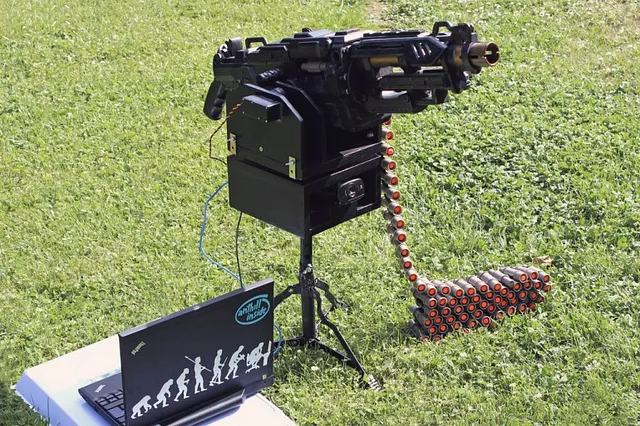A viral video featuring a ChatGPT-powered sentry gun caused controversy online. The video, showing a motorized sentry gun controlled by real-time ChatGPT commands, quickly gained attention, sparking concerns about AI’s potential use in weapons. But OpenAI swiftly intervened, cutting API access to the engineer behind the project and citing policy violations. Let’s break down what happened and why it matters.
What’s Happening & Why This Matters
The Viral Video: AI-Powered Sentry Gun in Action
In August 2023, an engineer named sts_3d began sharing videos of a rotating swivel chair project. By November, the design evolved into a motorized sentry gun capable of rotating and firing projectiles (though, for safety, only blanks and simulated lasers were used in the demonstration). The real twist came when the engineer integrated the project with OpenAI’s API. This integration allowed the sentry gun to aim and fire based on spoken commands powered by ChatGPT, making the device appears to act autonomously.
In the viral video after firing, ChatGPT responds with upbeat, almost playful comments. “Good job, you saved us!” said the engineer, to which the gun cheerfully replied, “I’m glad I could help!” While the concept of an AI-powered weapon might have seemed entertaining or impressive, its potential implications raised alarms.
OpenAI Steps In: Ceasing the AI Weapon Project
OpenAI acted swiftly upon notification of its API’s integration with a weaponized system. The company issued a statement clarifying that it had “proactively identified this violation of our policies” and notified the developer to halt the project. OpenAI’s Usage Policies show that its services cannot be used to develop weapons or automate systems that affect personal safety.
This swift action highlights OpenAI’s efforts to prevent its technology from being used in ways that could have dangerous real-world consequences. While the project did not feature an actual killing machine, the use of AI in any kind of weaponized device ignited concerns about the potential misuse of AI in military or civilian contexts.

A Bigger Conversation: AI in Weaponry
This incident brings back debates about the ethical use of AI. While the ChatGPT-powered sentry gun may seem like a novelty or a tech demo, the fact that AI can control such systems raises serious questions. If AI can control physical systems in the real world, what safeguards are in place to prevent misuse? How far are we from seeing AI used in more dangerous applications?
Many in the tech community have raised concerns about AI-powered weaponry, citing risks associated with autonomous systems that could act without human oversight. Integrating AI into weapons, even for non-lethal purposes, invites a broader conversation about regulation, safety, and the boundaries of AI development.
TF Summary: What’s Next
The ChatGPT-powered sentry gun project is a real-world example of AI’s potential dangers when applied to sensitive areas like weaponry. OpenAI’s intervention is one safeguard to ensuring its technology isn’t used irresponsibly. As AI creep spreads, it will be necessary for developers and regulatory bodies MUST stay vigilant; they MUST establish clear boundaries for its use. For now, the concerning incident shines uncomfortable lights on AI control and governance in application — especially in safety-critical fields.
— Text-to-Speech (TTS) provided by gspeech


